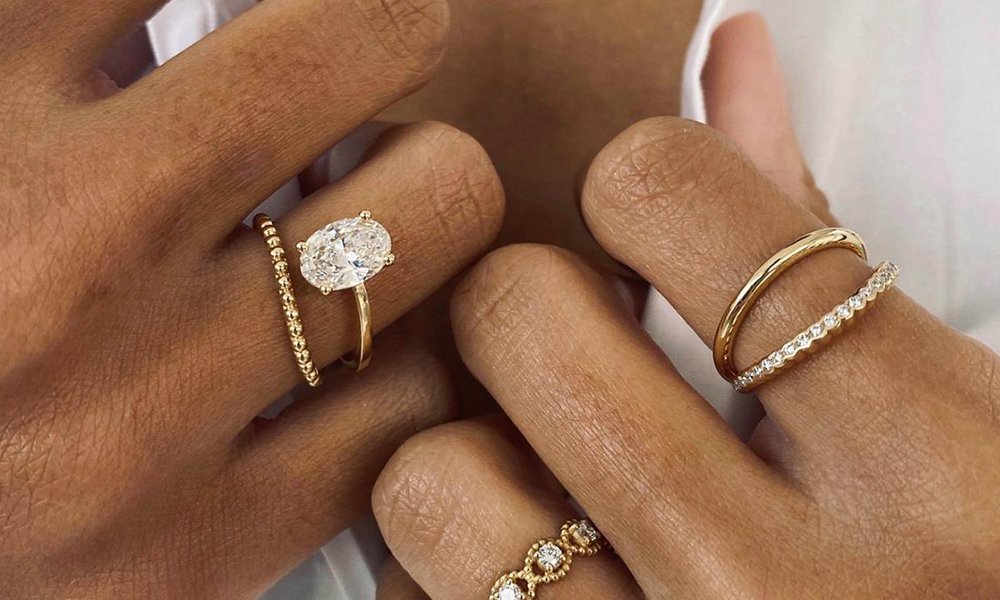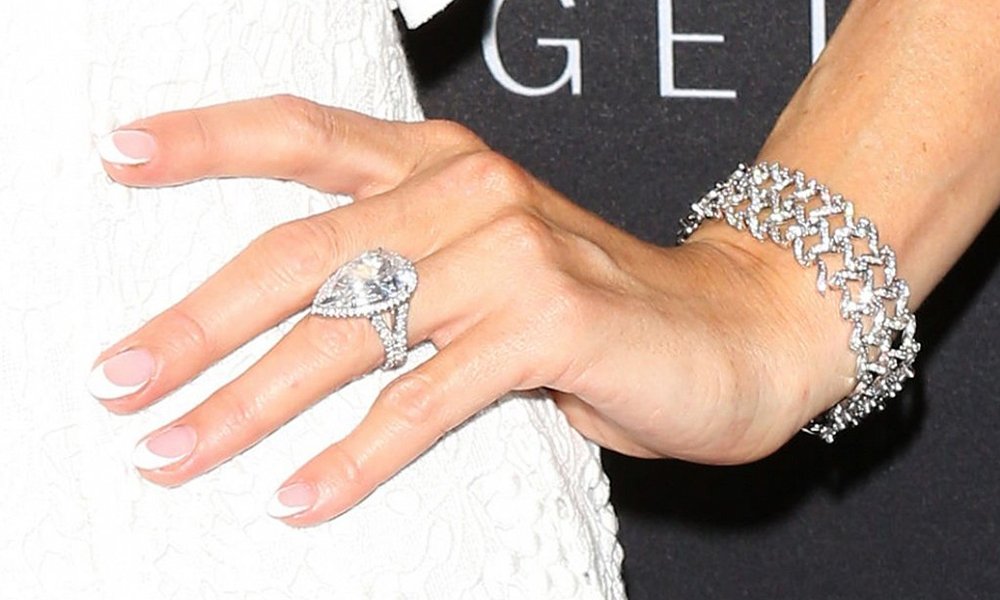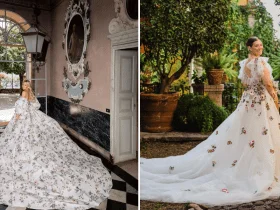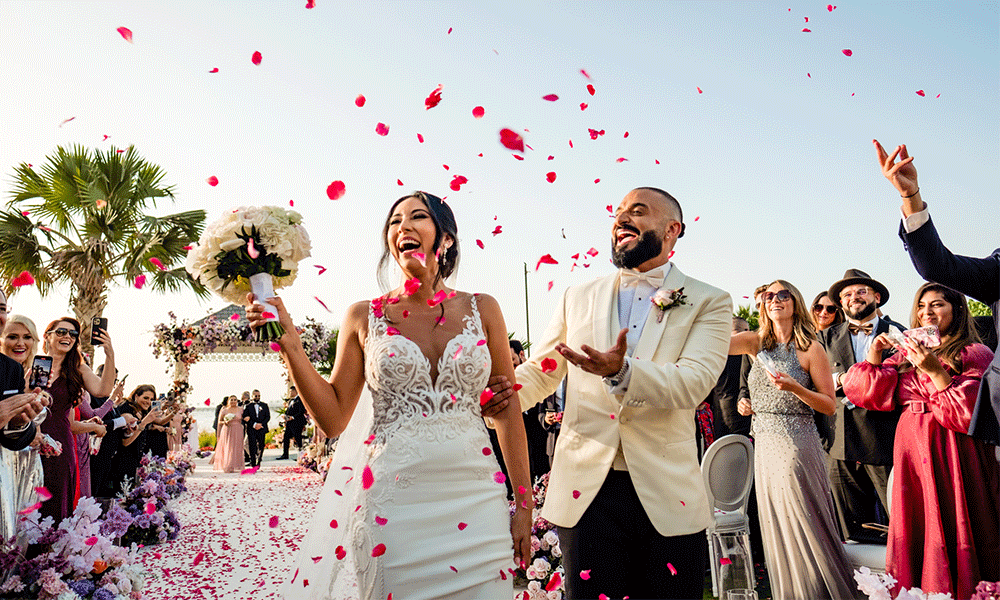YES! Lab-grown diamonds are real diamonds. Not just they are relatively lower-priced compared to the mined ones, but they are an excellent choice for modern couples due to their eco-friendly & ethically-sourced nature. Thoughtfully designed lab-grown diamond rings are considered as ‘future’ by many companies. With ‘mindful weddings’ being one of the biggest trends this year, couples are making an ethical choice by opting for lab-grown rings. So what is it and how to select the right one?
We got in touch with an expert from LearningJewelry.com to understand what a lab-grown diamond is along with some tips on choosing the best one.
Meet the Expert: Juli Church has been working with diamonds and jewelry for 6+ years. She’s worked at shops like Kay and Zales learning all the insider secrets about diamonds and jewelry. She’s a certified Diamondolgist who will help you pick the right one as per your taste and style.
What Is A Lab-Grown Diamond?

Picture Courtesy: @kimai.co
Lab-Grown Diamonds are just as natural as the mined ones, right up to their refractive qualities. The only difference lies in their ‘birth’ origins- while natural diamonds are found in the bowels of the earth’s crust and are mined, Lab Grown Diamonds, like the name suggests, are made in labs with the help of special equipment that can mimic the environmental conditions needed to create these beauties.
The technique involves utilizing the original mined diamond’s remains to accumulate tremendous amounts of solid carbon deposits subjected to extensive heating and shaping procedures that give them their desired forms, known as the CVD (Carbon Vapour Deposition) method.
Tips for Choosing Lab-Grown Diamond Wedding Rings
From magical backdrops to reception table centerpieces, a lot of things require your attention when planning a wedding. One thing that you should not ignore is the choice of a ring. It will be a symbol of your love and life in eternity, so pick one thoroughly.
While there are many stones worth considering, one that should be on your radar is lab-grown diamond. They are not all created the same, so below are some of the most important considerations.
Start With the Four Cs
Like when you are buying traditional mined diamond rings, you should consider the four Cs of lab-grown diamonds. This will help you evaluate the overall aesthetic value of the ring, making it easier to decide which to choose.
Carat
The carat refers to the weight of lab-grown diamonds. One carat is equal to 1/5 of a gram. The larger the cut, the more expensive the diamond is. Nonetheless, for lab-grown diamonds, it is common for people to choose one to three-carat in weight because they are significantly more affordable than their mined counterparts.
Color
There are two options when it comes to the color of lab-grown diamonds. It can be colorless or colored. The measurement is expressed as D to Z. The highest is Grade D, which means that the diamond is completely colorless, even when you examine it under a microscope. Meanwhile, Z is the lowest grade, which means that it has highly noticeable brown and yellow hues. For those who want to be different, a good option would be wedding rings with fancy colored diamonds. The colors can vary, including red, green, blue, yellow, and orange. The hue, tone, and saturation are three of the most important things given attention to when grading the stone.
Clarity
It is the measurement of the inclusions and blemishes that you will find in a lab-grown diamond. The lower the clarity grade, the more imperfections are present in the diamond, which can hurt its overall aesthetic. It is common to have small metallic inclusions and black spots, depending on how a lab-grown diamond is made.
Cut
The geometry, finish, and shape of a lab-grown diamond will dictate its cut. The scale is given as Ideal to Poor. Makers can make better cuts when dealing with synthetic diamonds. The cut can be round or fancy. Some of the most common diamond cuts include emerald, princess, and cushion, which will affect how the stone will look in a wedding ring.

Picture Courtesy: @mastertux
Get a Grading Report
Do not trust the words of the seller. Of course, they will try hard to market their product, so some may make claims that have no solid basis. Even if you are buying lab-grown diamond wedding rings, you need to obtain a grading report. The latter is a certified document prepared by a professional, which will let you know the physical characteristics of the stone that you are buying.
Depending on where you live, different organizations will provide the grading report for lab-grown diamonds. Some of them include American Gem Society Laboratories, Gemological Institute of America, International Gemological Society, and Gem Certification & Assurance Laboratory.
Do Not Forget the Metal
A lot of couples are probably too busy assessing the diamond that comes with the ring that they forget to evaluate the metal. The latter is equally important as it will have a huge impact on how the rings will look like. Choose a band that will complement the stone.
White gold and yellow gold are some of the most common options. They are affordable, but take note that they are not 100% gold. If you want something that you can wear forever, however, you can go for platinum, although such will come at a cost. If plain metal bands are boring, consider embellishing them with smaller lab-grown diamonds.

Picture Courtesy: @cleanorigin
Pick the Right Company
The demand for lab-grown diamonds is rising. With such, you can expect that more and more businesses are entering the market. Nonetheless, if you want the best bang for the buck, do not choose just any store. Just like how you exert effort evaluating the ring itself, you should also evaluate the seller.
A good starting point is to go online and read reviews. You can learn a thing or two from the real-life experiences of other people. Ask around from people you know as well if you want genuine opinions. More so, it is good to have a list of at least three companies and compare their prices or rings to help you decide which one is the best option.
Conclusion
Wedding rings do not have to be expensive. They are a symbol of love and eternity, but it does not mean that they should cost an arm and a leg. For practical couples, a good material of choice is lab-grown diamond. They are created in a controlled laboratory, making them significantly cheaper than their mined counterparts. Make sure to obtain a grading report and evaluate the four Cs – carat, color, clarity, and cut.
Feature Image Credit: @mtranphoto












Leave a Reply